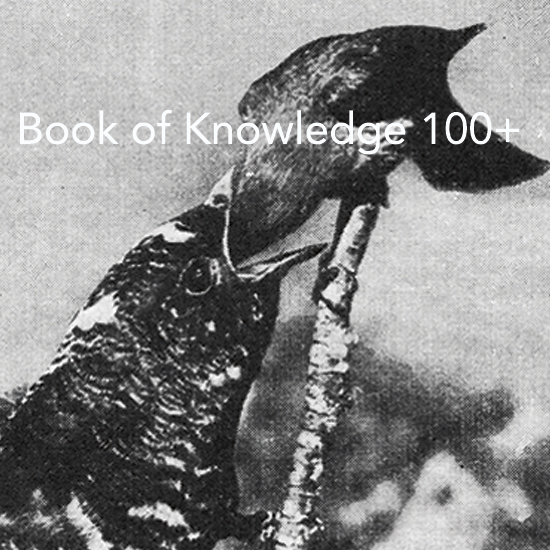
mick
finch / the book of knowledge, 100 +
For most of my artistic life I have made paintings. There came a point when they ceased to be autographic statements. Images entered my lexicon and I increasingly spent time in the studio projecting, tracing and masking images that I had digitally appropriated and transformed into 2D shapes (a good example of this was the Closer Than You Think series from 1995/96 the archive of which can be found on my website here.
Invariably this led to assembling archives of the images which were becoming the ephemeral material of my work, like ghosts displaced through time and space, taking on life on the thickness of painted surfaces. I realized that I was only nominally making things that could be called paintings. Instead I was fabricating dispositives or tableau forms where the otherwise invisible circulation of images could congeal and materialize. Digital photographs entered the work in 2009 and the structure of the support became more like an open pictorial apparatus than a painting support. Photographs relating to places, layers of memory or palpable sensations of time became layered into wooden relief structures in a series called Engrams (The Engram series was made between 2011 and 2013. Its archive can be found at: mickfinch.com/2011/index.html, mickfinch.com/2012/index.html and mickfinch.com/2013/index.html ).
My interest increasingly turned to the cultural science practices of Aby Warburg and particularly his early use of photography in the service of his methodology. In the Mnemosyne Atlas, photographs of works of art were attached to black boards into a synoptic organization of the material. This made evident relationships and proximities that could not be explored prior to the advent of photography. Warburg’s practice has at its core the need of an archive and to supply it a technical apparatus.
Research projects I have been working on in relation to Warburg led me to the Book of Knowledge series (referred to from now on as BOK). It started in 2014 and is ongoing. To date it is comprised of more than 150 images, outputted as digital archival prints on Hahnemühle German Etching paper in various editions. The BOK was a set of encyclopedias published by Waverly and was very much of its time. It reflected the aspirations and prejudices of post-war Britain. Empire, monarchy, parochial modernism and exoticism - a few of its traits that masked a sense of the catastrophe and ruins that haunted both its pages and the experiences of the generation that owned them.
They were a vivid memory from my early childhood, and I acquired a set of its 8 volumes, published in the late 1950s/ early 1960s which corresponded to the volumes I had known. I set out to scan the nearly 3000 images contained in the volumes with the intention of exploring the images. My interest was not to embark on a memory project. Rather, I wanted to explore a body of material that is precisely inscribed, limited, locked in its time and its materiality as printed matter. I chose to scan the material as since 1995 I have increasingly used PhotoShop as a part of my studio practice. This seemed the natural way to engage with the images. They were scanned at the very high resolution of 1200dpi so that the texture and the grain of the images, generated by the processes by which they were originally printed, could become integral to the work.
After scanning started I soon began working with the images. I explored strategies to incorporate the images through the use of compositional structures which arose intuitively, as the work progressed, and also in relation to key references. Warburg I have already mentioned but Walter Benjamin’s ideas have also figured strongly (a key source in structurally understanding Warburg’s idea of ‘Pathos Formula’ and Benjamin’s ideas about images in relation to allegory has been Adi Efal’s article from 2000, Warburg's' Pathos Formula' in Psychoanalytic and Benjaminian Contexts).
The structures break down, roughly, into four categories whose production is intertwined throughout the series. For my own purposes I refer to them as continuums, dispositives, juxtapositions and pathos formulas.
Continuums are when material from different images are combined into almost seamless spatial scenes. Examples of this category are BOK 48, BOK 78, BOK 116 and BOK 129.
Dispostiives are when there are allusions to a process or a mechanism. BOK 42 and BOK 60 are good examples of this. They both have a relationship to production in a way that relates in many ways to Duchamp’s sense of production in The Bride Stripped Bare by Her Bachelors, Even. In BOK 60 this is as a cruel balancing out between luxury and the natural world. The scales joining them is pivoted by one of Michelangelo’s Slaves.
Juxtapositions are simply the joining of two images,examples are BOK 71 and BOK 79. BOK 79 joins images of New York and Moscow and also demonstrates how the contact with historic material often coincides with feelings about the present. In this case, the shadow of Russian intervention that hung over the election of Trump and the Brexit result of the UK EU referendum. The Pathos Formula category broadly refers to the methodology of grouping, side-by-side, images. A method of the production of meaning employed by Aby Warburg for his Mnemosyne Atlas, examples are BOK 114 and BOK 141. Both of these images engage with movement, contrasts of spaces and places and compressions of temporalities.
All works are archival digital prints on Hahnemühle German Etching in varying editions. The series began in 2014 and is on-going. Please contact mick(at)mickfinch.com for further details